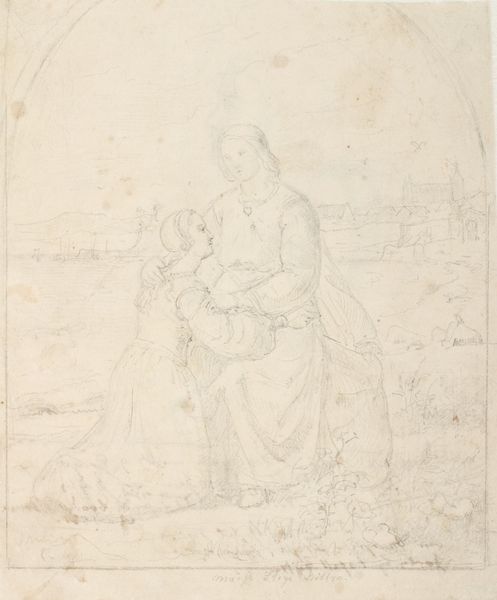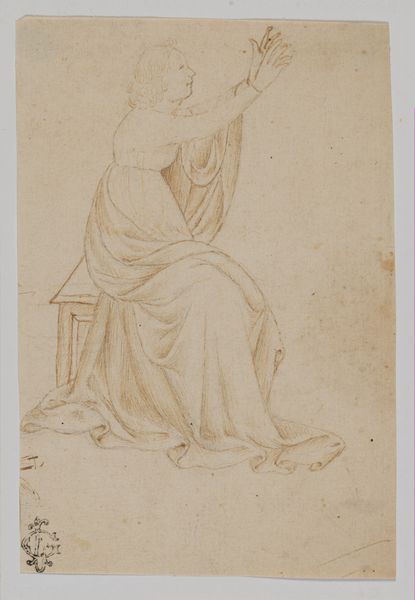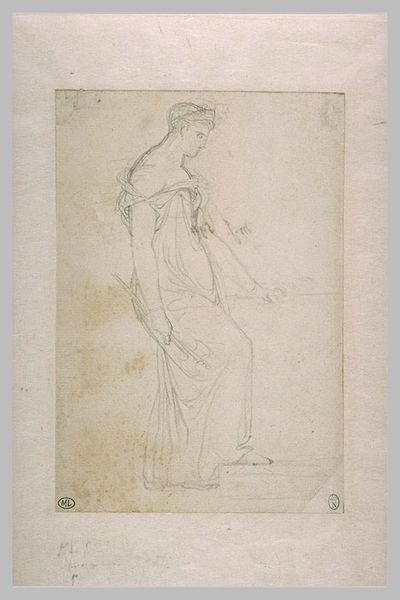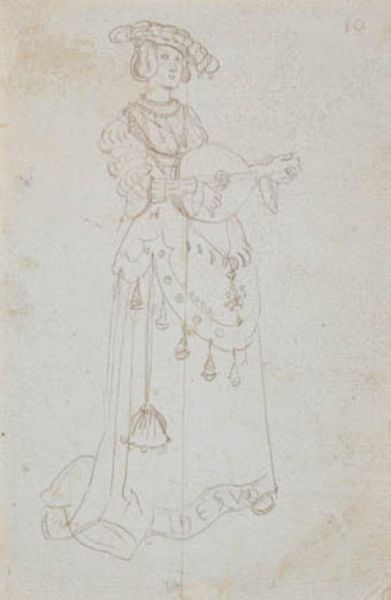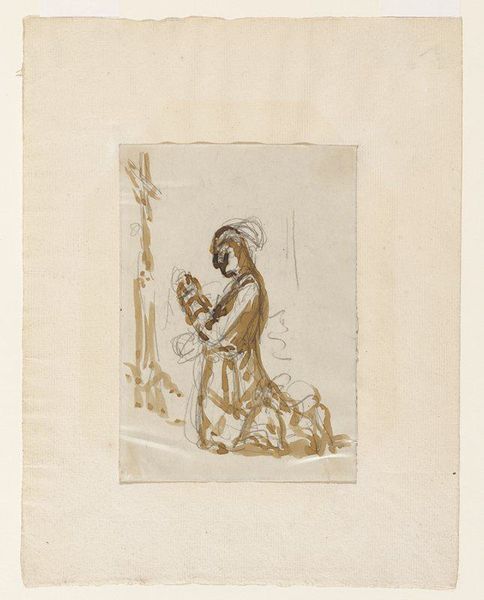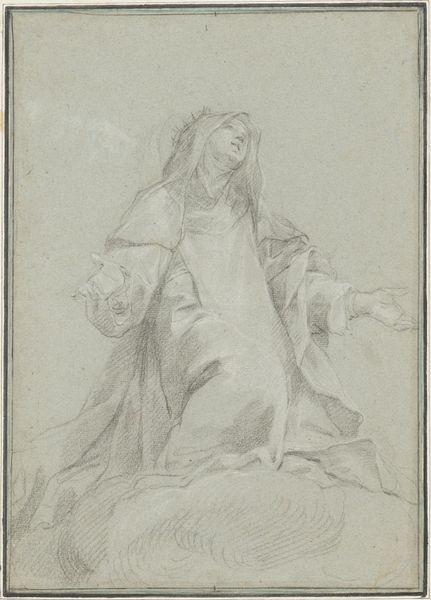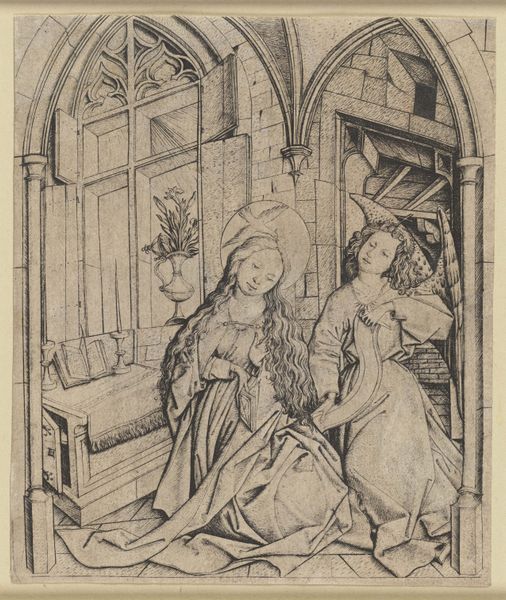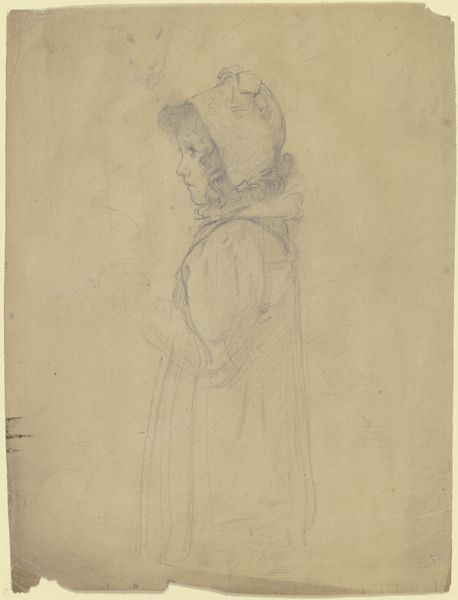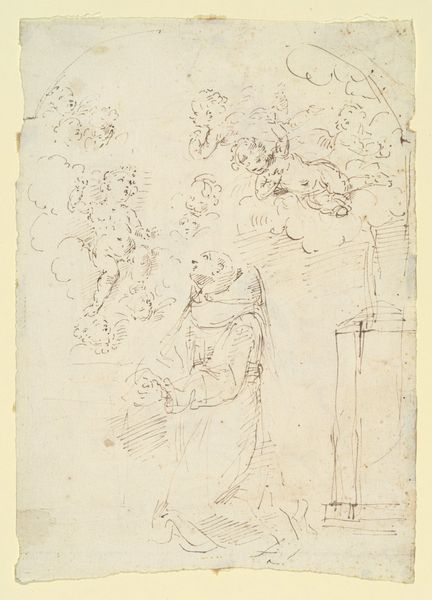
drawing, pencil
#
portrait
#
drawing
#
figuration
#
romanticism
#
pencil
#
academic-art
Copyright: Public Domain
Curator: Here we have Franz Pforr’s pencil drawing, "Mary in the chamber (II)," created around 1811. It’s currently part of the Städel Museum collection. Editor: There’s something so vulnerable about this piece. The fine lines create a delicate, almost ethereal feel. The subdued quality adds to the sense of quiet contemplation. Curator: The Pre-Raphaelite Brotherhood, including Pforr, rejected the prevailing academic style. This work exemplifies that. It returns to earlier sources—particularly early Renaissance art—for what they saw as honesty and spiritual depth. Look at the linearity, the way light is rendered with delicate hatching rather than strong chiaroscuro. Editor: Absolutely. Considering its historical context, this pencil drawing raises interesting questions about art production. Who commissioned it? How did its materials reflect access and the broader economy? Pforr employed pencil, but why? And was this choice tied to shifting social perceptions of art's value, from luxurious courtly indulgence to an increasingly accessible and reproducible art form? Curator: Interesting considerations. Note the detailed background and the architectural details. Pforr studied art history, and the influence is very clear here. The carefully depicted room emphasizes the setting, while the architectural elements contribute to the image’s symbolic significance, adding a dimension of solemnity to the devotional scene. Editor: I can also notice that there are pencil grid lines underneath, used as an armature. How does this material constraint relate to academic practices? To what degree can we read such practices through socio-political lens—for example, artistic academies served both creative and patronage systems, and thus influenced production and subject? Curator: Yes, absolutely. That would make sense as it seems he was using that underdrawing as some guidance. It suggests his methods for precision, possibly in search of a sense of purity in technique and material. Editor: Looking at this work now, knowing its history, it allows me to better understand not only the artist’s perspective but the evolving role art and its perception would come to occupy within society. Curator: I concur. Pforr was seeking sincerity and drawing a moral framework, but even those intentions were being shaped by, and in turn, would shape art's social standing.
Comments
No comments
Be the first to comment and join the conversation on the ultimate creative platform.

